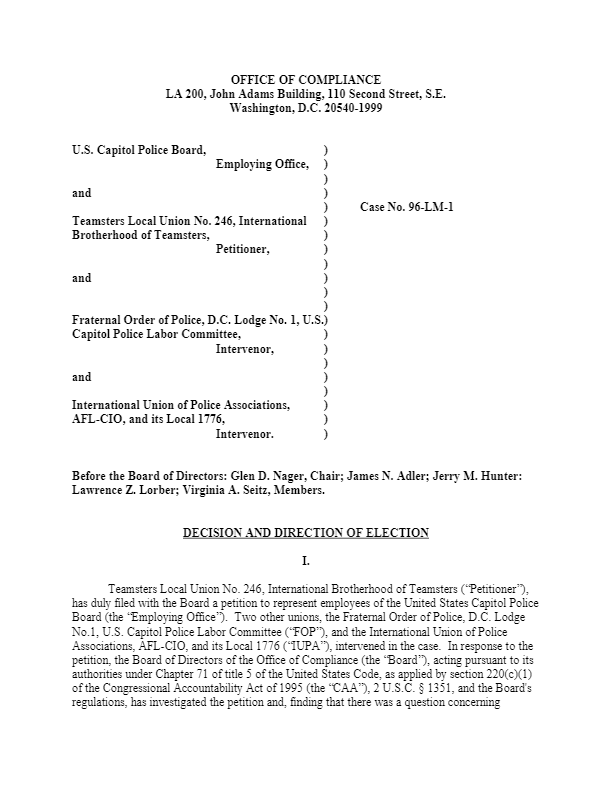DECISION AND DIRECTION OF ELECTION
Teamsters Local Union No. 246, International Brotherhood of Teamsters (“Petitioner”), has duly filed with the Board a petition to represent employees of the United States Capitol Police Board (the “Employing Office”). Two other unions, the Fraternal Order of Police, D.C. Lodge No.1, U.S. Capitol Police Labor Committee (“FOP”), and the International Union of Police Associations, AFL-CIO, and its Local 1776 (“IUPA”), intervened in the case. In response to the petition, the Board of Directors of the Office of Compliance (the “Board”), acting pursuant to its authorities under Chapter 71 of title 5 of the United States Code, as applied by section 220(c)(1) of the Congressional Accountability Act of 1995 (the “CAA”), 2 U.S.C. § 1351, and the Board’s regulations, has investigated the petition and, finding that there was a question concerning representation, has held a pre-election investigatory hearing to develop a record upon which to make a decision as to disputed representation issues. The Employing Office has also raised several collateral issues relating to the conduct of the hearing. Some of those issues have been decided previously by order. The Board now disposes of the rest.
A. Appropriate Unit
The parties agree that a unit consisting of all police officers, defined as sworn members of the United States Capitol Police who are authorized to carry a gun and to make arrests, except those employees excluded by statute, is appropriate. Record at I:46-47; II:235-240; III:7-8. (All Record references are to the Official Transcript of the Pre-Election Investigatory Hearing, Volumes I-V, referring to the transcript of the hearing conducted on November 12 and 13 and December 2, 3, and 4, 1996, respectively.) However, the parties have different views concerning the point at which probationary police officers, during their probationary period, have a clear and identifiable community of interest with other police officers and are therefore appropriately included in the bargaining unit, as well as whether a number of employees meet the statutory criteria for exclusion.
